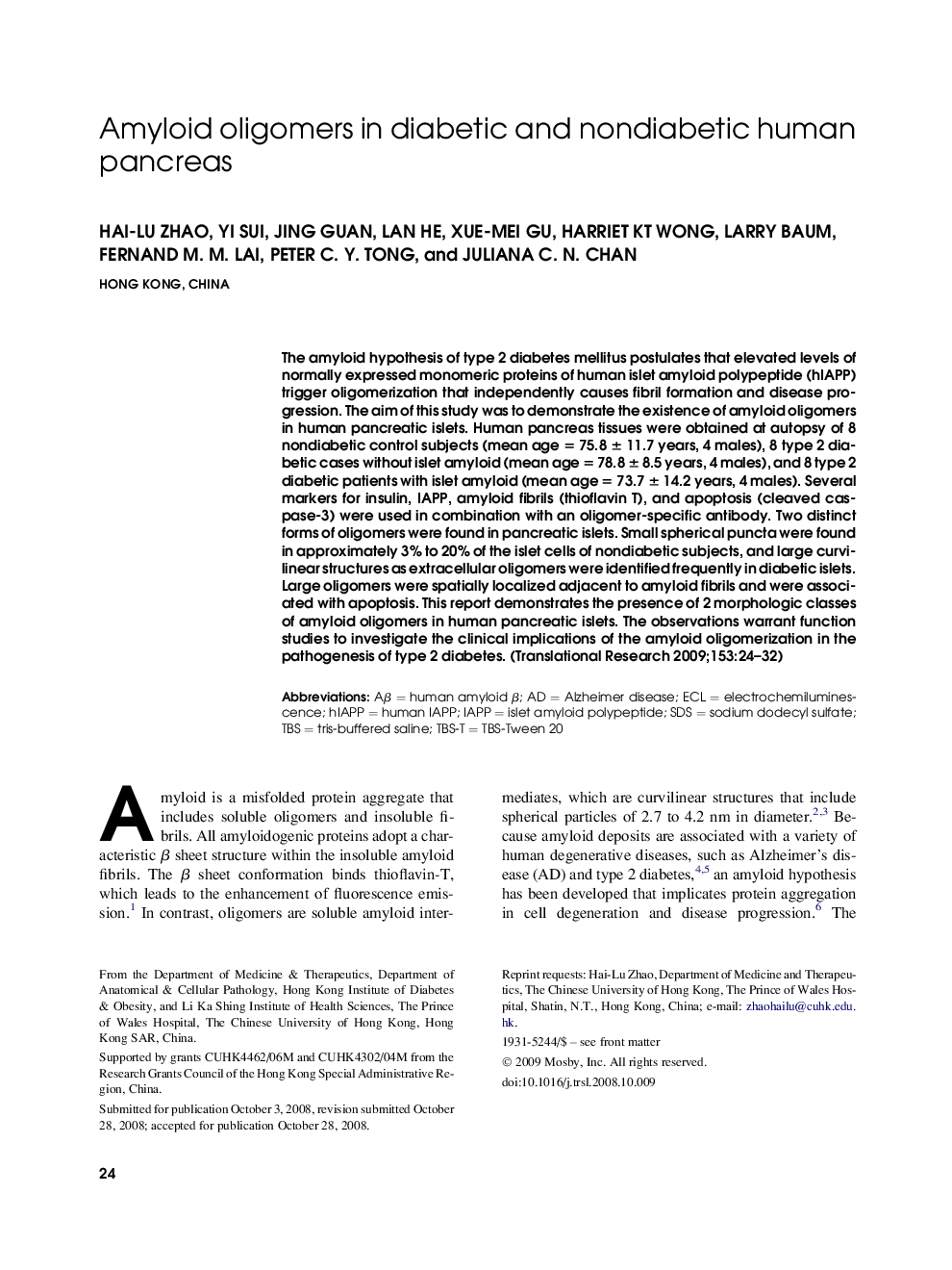| Article ID | Journal | Published Year | Pages | File Type |
|---|---|---|---|---|
| 3841174 | Translational Research | 2009 | 9 Pages |
The amyloid hypothesis of type 2 diabetes mellitus postulates that elevated levels of normally expressed monomeric proteins of human islet amyloid polypeptide (hIAPP) trigger oligomerization that independently causes fibril formation and disease progression. The aim of this study was to demonstrate the existence of amyloid oligomers in human pancreatic islets. Human pancreas tissues were obtained at autopsy of 8 nondiabetic control subjects (mean age = 75.8 ± 11.7 years, 4 males), 8 type 2 diabetic cases without islet amyloid (mean age = 78.8 ± 8.5 years, 4 males), and 8 type 2 diabetic patients with islet amyloid (mean age = 73.7 ± 14.2 years, 4 males). Several markers for insulin, IAPP, amyloid fibrils (thioflavin T), and apoptosis (cleaved caspase-3) were used in combination with an oligomer-specific antibody. Two distinct forms of oligomers were found in pancreatic islets. Small spherical puncta were found in approximately 3% to 20% of the islet cells of nondiabetic subjects, and large curvilinear structures as extracellular oligomers were identified frequently in diabetic islets. Large oligomers were spatially localized adjacent to amyloid fibrils and were associated with apoptosis. This report demonstrates the presence of 2 morphologic classes of amyloid oligomers in human pancreatic islets. The observations warrant function studies to investigate the clinical implications of the amyloid oligomerization in the pathogenesis of type 2 diabetes.
